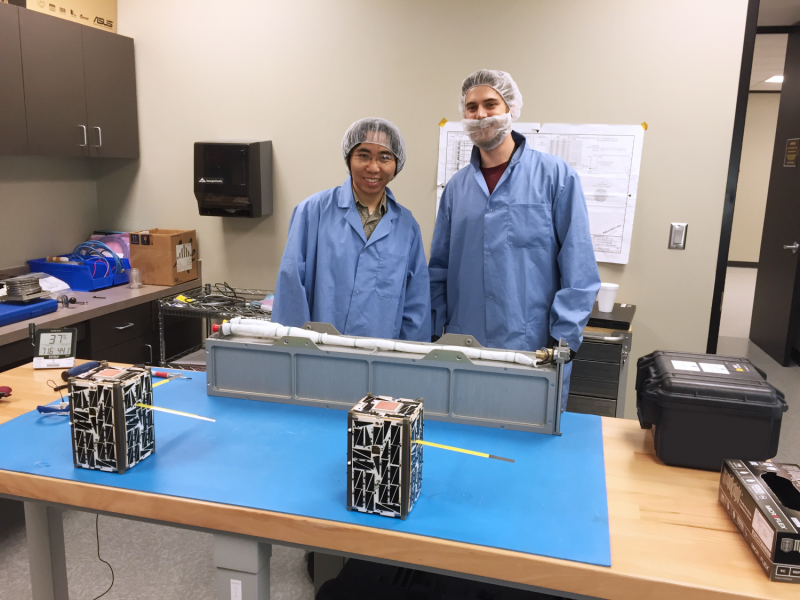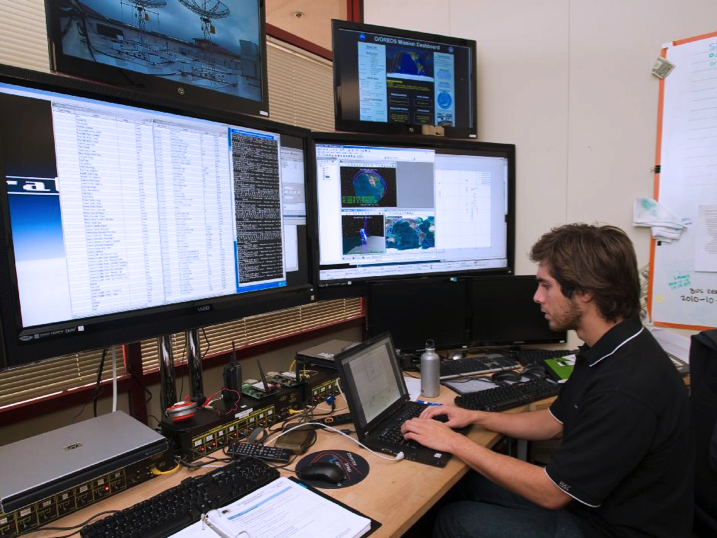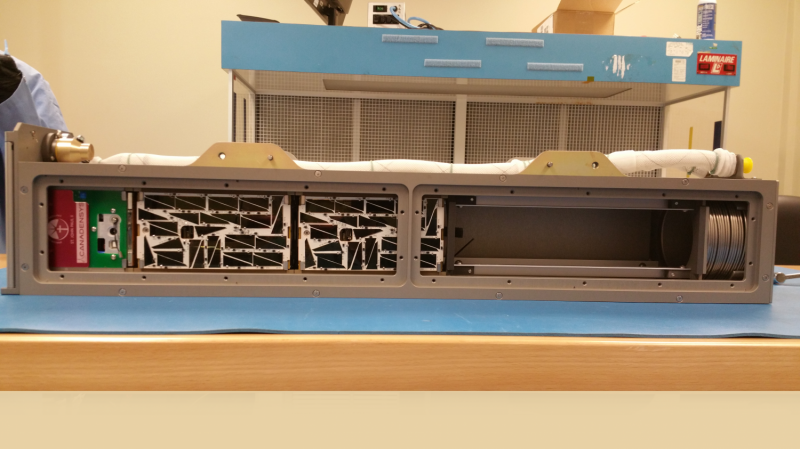NASA small satellite duo deploys from space station into Earth orbit

After a five-month stay aboard the International Space Station, NASA's two Nodes satellites were deployed on May 16 from the NanoRacks platform and into low-Earth orbit to begin their much anticipated technology demonstration. These tiny satellites have dimensions of only four by four by six inches. The ground controllers for the Nodes mission received confirmation that both satellites are transmitting and are in good health when they passed over the tracking station for the first time, soon after deployment. The first transmission of science data is expected by May 18.
Orbiting about 250 miles above Earth, Nodes will demonstrate the ability to receive and distribute commands in space from the ground, while periodically exchanging scientific data from their onboard radiation instruments, a first for small satellites. The satellites will be able to configure their data network autonomously by determining the best-suited of the two spacecraft to communicate with the ground each day of the mission. These demonstrations enable a path toward new network capabilities for operating swarms of small spacecraft in the future.
"The purpose of the Nodes demonstration is to test out the potential for using a network of small, low-cost satellites to perform complex science missions," said Andrew Petro, program executive for the Small Spacecraft Technology Program (SSTP) in the Space Technology Mission Directorate at NASA Headquarters in Washington. "If we can demonstrate that any single satellite can 'talk' to the ground on behalf of a whole network of satellites, that's a great tool for creating new, more affordable space mission concepts."
Since deployment from the station, the Energetic Particle Integrating Space Environment Monitor (EPISEM) radiation sensor aboard each Nodes satellite is collecting data on the charged particle environment above Earth. Montana State University in Bozeman provided the EPISEM instruments under contract to NASA. The Nodes satellites will demonstrate their networking capabilities through communication of this space environment data with each other and the ground.

"The technologies demonstrated during this mission are important, as they will show that a network of satellites can be controlled without communicating to each satellite directly," said Roger Hunter, program manager for SSTP at NASA's Ames Research Center in Moffett Field, California. "Nodes will demonstrate inter-satellite communications and autonomous command and control; this will help enable future constellation command and control capabilities."
Networks of small satellites may open new horizons in astronomy, Earth observation and solar physics. Their range of applications includes multi-satellite science missions, the formation of synthetic aperture radars for Earth-sensing systems, as well as large aperture observatories for next-generation telescopes. They also can serve to collect science measurements distributed over space and time to study the Earth, the Earth's magnetosphere, gravity field, and Earth-Sun interactions.
The two Nodes satellites launched to the International Space Station on the fourth Orbital ATK cargo mission on Dec. 6, 2015. As part of a partnership with Ames, Santa Clara University in California will conduct ground operations for the planned two-week mission. Acting as a ground station, the university will provide an online mission dashboard with current mission status, including operational status of satellite subsystems, ground segment communications status and satellite location tracking. Though the mission is scheduled to last for two weeks, the small satellites will remain in orbit for several more months before the satellites' orbits decay, and they re-enter and burn up in the atmosphere.
As part of an education and outreach program run by Santa Clara University, both Nodes satellites will periodically broadcast packets of data, known as beacon broadcasts. When active, these transmissions will occur on the amateur radio frequency 437.1 MHz at intervals of either 30 or 60 seconds, depending on each satellite's mode of operation.

Data packets will include information from the satellite's science instruments as well as information on the status of spacecraft subsystems. Amateur radio operators are invited to be part of the Nodes community by receiving the packets and submitting them to Santa Clara University.
Nodes continues the legacy of the PhoneSat series of small satellites by using commercially developed Android smartphone technology augmented with additional custom software that enables the satellites to perform spacecraft functions.
The launch of the Nodes small satellites follows last year's attempted launch of the eight small satellites of the Edison Demonstration of Smallsat Networks (EDSN) mission, which were lost in the failure of the U.S. Air Force's Super Strypi launch vehicle. However, the same team that developed the Nodes spacecraft at Ames developed the EDSN spacecraft, and many of the same capabilities will be demonstrated in the Nodes mission, with additional software enhancements.
"The Nodes mission concept was an opportunity to leverage the excellent work done on EDSN, and extend the systems at low cost and effort," said David Korsmeyer, director of engineering at Ames. "This is the value of the small satellite model – quickly adapt to new opportunities and leverage systems for incremental missions."
Three CubeSats were selected to receive a flight opportunity through NASA's CubeSat Launch Initiative on the Educational Launch of Nanosatellites (ELaNa) IX mission, and were deployed on May 16 at the same time as Nodes: the University of Michigan's CubeSat investigating space weather called the Atmospheric Density Response to Extreme driving (CADRE) mission; the University of Colorado Boulder's Miniature X-Ray Solar Spectrometer (MinXSS) mission, a science investigation to study solar flares, active regions, the quiescent sun, and their impact on Earth's upper atmosphere; and the STMSat-1, the first CubeSat developed by an elementary school.
More information: For more information about the mission and access the Nodes Mission Dashboard, visit nodes.engr.scu.edu/
For more information about NASA's Small Spacecraft Technology Program, visit www.nasa.gov/smallsats
Provided by NASA



















